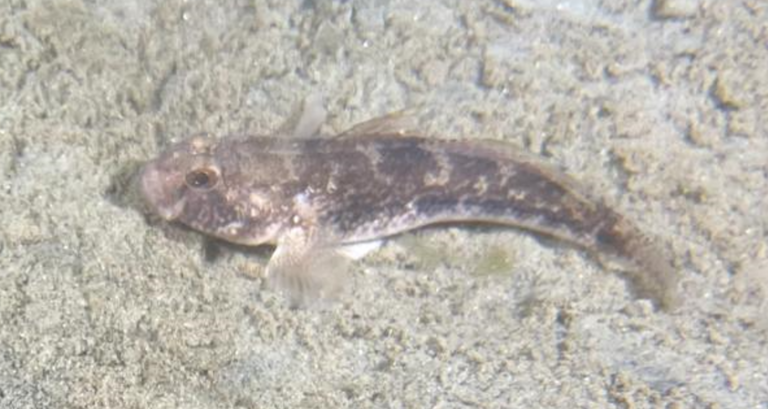Pipefish (Syngnathus acus) – Grote zeenaald

Pipefish (Syngnathus acus) - Grote Zeenaald
Taxonomy: The pipefish belongs to the Syngnathidae family, which also includes seahorses and sea dragons. Their name translates to “fused jaws,” describing their long, tubular snouts.
Species: The great pipefish (Syngnathus acus) is the largest pipefish species in Europe, growing up to 45 cm long.
Reproduction: Much like their seahorse relatives, male pipefish carry the fertilized eggs in a brood pouch until they hatch, which can take between 2 and 6 weeks depending on temperature and species.
Habitat: They thrive in shallow coastal areas, such as seagrass meadows, estuaries, and sandy bays. The vegetation provides excellent cover.
Diet: Pipefish are carnivorous, feeding on tiny crustaceans, plankton, and larvae. Their tube-shaped mouths act like straws to suck up prey.
Conservation: Although not currently endangered, habitat degradation and pollution threaten their populations. Conservation efforts focus on protecting seagrass meadows and coastal habitats.
Unique Anatomy: The pipefish’s elongated body allows it to blend perfectly into seagrass. Unlike most fish, it swims upright, moving slowly to avoid detection by predators.
Camouflage:
Pipefish can change their color slightly to match their surroundings, making them difficult to spot among seagrasses or algae.Lifespan:
Typically, pipefish live around 5 years in the wild, though this can vary based on environmental conditions.
Pipefish: Masters of Disguise in the Seagrass
The ocean is full of remarkable creatures, and one of the most curious among them is the pipefish. These long, slender fish are closely related to seahorses, but they have their own unique features that make them fascinating inhabitants of the underwater world.
What is a Pipefish?
Pipefish are part of the Syngnathidae family, known for their distinct tube-like mouths and fused jaws. They are found in shallow coastal waters, often hidden among seagrass meadows, which makes them masters of camouflage. Their elongated bodies blend so well with their surroundings that you could easily miss them!
A Day in the Life of a Pipefish
Pipefish are slow swimmers, relying on their camouflage to stay safe from predators. Unlike most fish, they swim upright and use their tiny dorsal fins for propulsion. Their diet consists of small crustaceans, larvae, and plankton, which they suck up with their tube-shaped mouths.
Despite their slow movements, pipefish are efficient hunters. They wait for their prey to come close and quickly snap it up, swallowing it whole since they don’t have teeth.
Reversed Roles: The Male Pipefish Pregnancy
One of the most fascinating aspects of the pipefish is their unique reproductive strategy. Like seahorses, it’s the male that carries the eggs. The female lays her eggs into the male’s brood pouch, where they are fertilized and carried until they hatch. After the young emerge, they are fully independent and must fend for themselves.
This reversed role in reproduction is rare in the animal kingdom and makes pipefish a standout species.
Guardians of Seagrass Ecosystems
Pipefish play an essential role in their environment, helping to maintain the delicate balance of coastal ecosystems. By feeding on small crustaceans and larvae, they contribute to the health of seagrass meadows, which are vital nurseries for many other species of marine life.
Threats to Pipefish
Unfortunately, pipefish are facing threats due to habitat destruction, pollution, and climate change. As their seagrass homes disappear, so too do the populations of these unique fish. Conservation efforts aimed at protecting coastal habitats are essential to ensure that pipefish continue to thrive.
Conclusion
Pipefish may not be as well-known as their seahorse cousins, but they are equally important and fascinating creatures of the ocean. Their ability to blend into their surroundings, along with their reversed reproductive roles, makes them true marvels of marine life. Protecting their habitats is vital to ensure these underwater masters of disguise continue to flourish in our seas.







